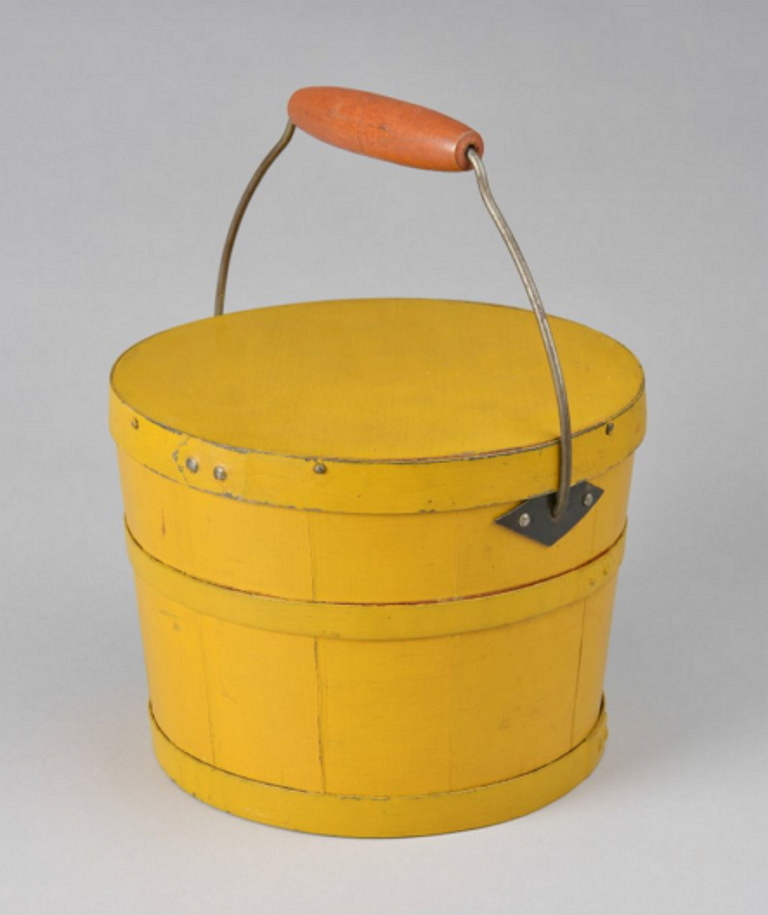Basket
Leather-lined basket inscribed "E.P.W." and "C.V.H. '58", Church Family, Mount Lebanon, NY
ca. 1858
Description
Square base to circular rim. Cat's-head style. Black ash splint. Uprights 3/8" wide and weavers 1/4" wide. Bonnet-shaped handle rises above basket for about 6" and is 1" wide at widest point. Interior lined in leather; one piece at bottom and sides are three pieces of leather. Brown canvas covers rim of basket. Exterior of base has three cleats, 8 1/2" long, 7/8" wide.
Notes
Religious ideals of quality, utility, and function are evident even in utilitarian baskets. Shaker concern for function is most apparent in details of construction. Notches that taper on both sides are cut into the inside of the handle and firmly hold the rim of the basket in place. Wooden strips tacked to the base of the basket protect it from abrasion. The handle swells in its underside at the apex of the arc, providing added strength in the area most likely to strain under weight. The basket lining, consisting of two pieces of canvas at the rim and four rectangular pieces of leather inside the body, enabled the basket to hold grain, seed, liquids, or other materials that might pass through the weave or stick to the inside. The lining allows this basket to function as a pail or a bucket. Marks on the basket indicate some of the tool used in its manufacture. Faint lines left by a metal files are visible on the inside of the rim, and saw marks can be seen on the wooden strips tacked to the base. Rims and handles finished with metal files are on characteristic that often distinguishes baskets made at Mount Lebanon from those made at other Shaker communities, by Native Americans, or by the non-Shaker basketmakers. The handle bears three inscriptions: "E.P.W." and "58" painted (apparently by the same hand) at opposite ends and the initials "C.V.H." pencilled above the "58". The "C.V.H." may refer to Catherine Van Houten (1817-1896) of Mount Lebanon, who was a member of the Canaan, North, and Church Families.
New York Mount Lebanon Church Family


















